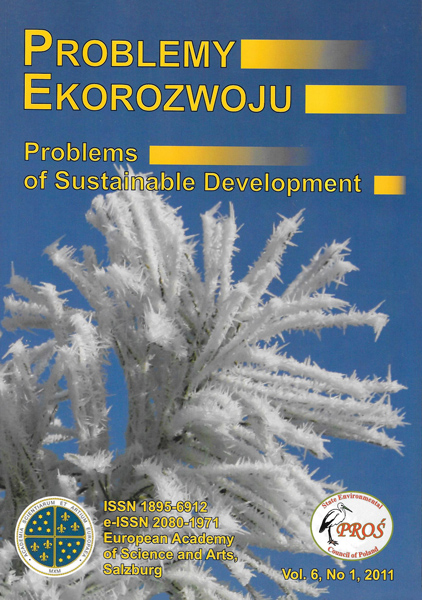Wzrost niskowęglowy: zrównoważoność i rozwój technologiczny z perspektywy Indii
Purnamita Dasgupta* ,and Nisha Taneja**
*Environmental and Resource Economics Unit, Institute of Economic Growth University of Delhi Enclave (North Campus), Delhi 110007, India
E-mail: purnamita.dasgupta@gmail.com or pdg@iegindia.org
** Indian Council for Research on International Economic Relations, Core 6A, 4th Floor, India Habitat Centre, New Delhi 110003, India
E-mail: ntaneja@icrier.res.in or: tanejanisha@hotmail.com
Abstract
This paper provides an Indian perspective on the issue of technology transfer, in the specific context of tackling climate change. The paper examines how technology transfer issues have panned out when developing countries have had to meet standards laid down in international agreements. In addressing climate change, the efficacy of the CDM as an instrument to facilitate technology transfer is analysed. The socio-political and economic analysis of implementing the clean development mechanism provides useful insights. An indicative exercise on India’s export vulnerability in the face of alternative regulatory regimes such as imposition of carbon tariffs demonstrates the importance of technology transfer mechanisms between the developed and developing countries. The attainment of sustainable development through forward looking mechanisms of technology transfer will improve India’s contribution to a global solution for climate change.
Key words: climate change, sustainable development, technology transfer, clean development mechanism,trade agreements
Streszczenie
Artykuł przedstawia doświadczenia związane z transferem technologii w kontekście przeciwdziałania zmianom klimatycznym na przykładzie Indii. Transfer technologii może przynieść oczekiwane rezultaty, gdy kraje rozwijające się sprostają standardom zawartym w międzynarodowych porozumieniach. W kontekście zmian klimatycznych i transferu technologicznego została przeanalizowana skuteczność instrumentu CDM (Clean Development Mechanism, mechanizm czystego rozwoju). Uwzględniono aspekty społeczno-polityczne i ekonomiczne. Przykład wrażliwości indyjskiego eksportu w obliczu alternatywnych systemów regulacyjnych, takich, jak nałożenie podatku węglowego, ukaże znaczenie mechanizmów transferu technologii pomiędzy rozwiniętymi a rozwijającymi się krajami. Osiągnięcie rozwoju zrównoważonego przy pomocy wybiegających w przyszłość mechanizmów transferu technologicznego pozwoli powiększyć wkład Indii do globalnego rozwiązania problemu klimatycznego.
Słowa kluczowe: zmiany klimatyczne, rozwój zrównoważony, transfer technologii, mechanizm czystego środowiska, umowy handlowe
Problemy Ekorozwoju 6(1)2011: 65-74
